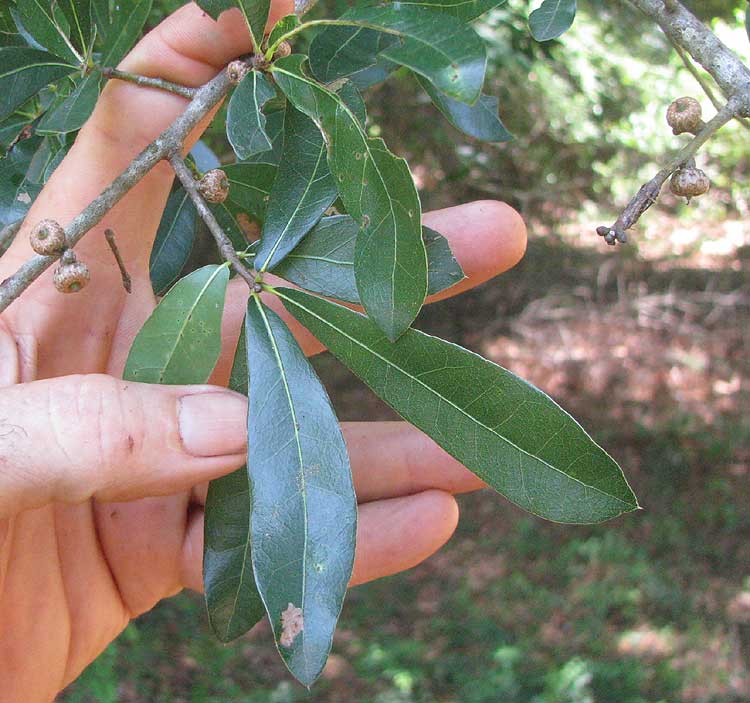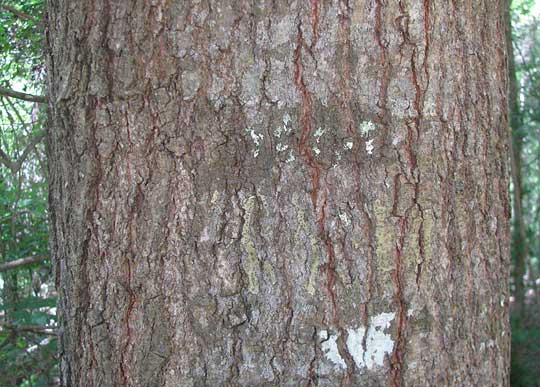Excerpts from Jim Conrad's
Naturalist Newsletter

from the June 24, 2012 Newsletter issued from the woods of the Loess Hill Region a few miles east of Natchez, Mississippi, USA
LAUREL OAK
It's always a good day when I can meet a tree species new to me, just stand there and admire it, and let sink in what the species' special features are, the characteristics that make it a distinct species. This week I got to have that experience, and it was an especially gratifying for two reasons: First, I'd passed this very tree many times without realizing who it was, and; second, just last month we looked at a very closely related species, the "oak that comes and goes," a species that has gone unrecognized as a species for so long that it doesn't yet have a commonly accepted English name. It was Quercus hemisphaerica, whose page is at http://www.backyardnature.net/n/w/qu-hemis.htm.
That species had been regarded as merely part of the normal variation of the Laurel Oak. This week I met the Laurel Oak itself, QUERCUS LAURIFOLIA. It was a fair-sized tree in the swampy bottomlands of Homochitto National Forest near here. At the top of this page you can see its twigs bearing immature acorns and narrow, unlobed leaves with conspicuous yellow midribs, and blade tips ending with sharp, short bristles.
The Laurel Oak's leaves are classified as semideciduous or tardily deciduous because they remain on the tree through most or all of the winter, but not long enough to be regarded as evergreen. Last season's acorns picked up beneath the tree are shown below:

The tree's blackish-brown bark with flat-topped ridges between furrows is shown below:

Laurel Oaks are endemic to the US Southeastern Coastal Plain from Virginia to Texas. In the upland interior they don't reach as far north as Kentucky and Tennessee; they're genuinely a Deep South species.